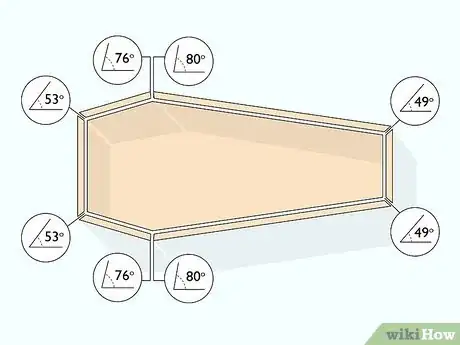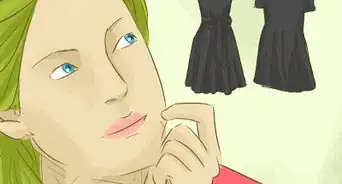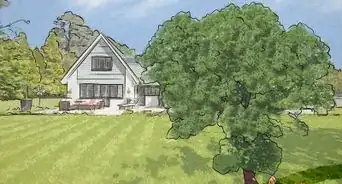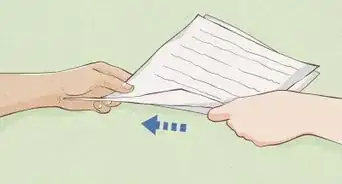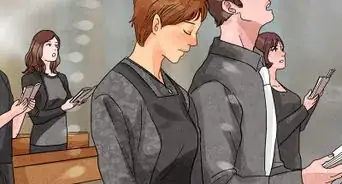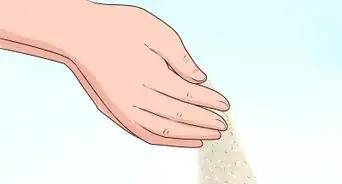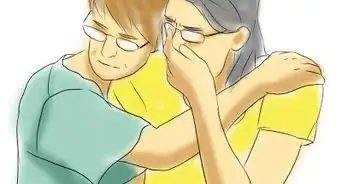This article was co-authored by wikiHow staff writer, Amber Crain. Amber Crain has been a member of wikiHow’s writing staff for the last six years. She graduated from the University of Houston where she majored in Classical Studies and minored in Painting. Before coming to wikiHow, she worked in a variety of industries including marketing, education, and music journalism. She's been a radio DJ for 10+ years and currently DJs a biweekly music program on the award-winning internet radio station DKFM. Her work at wikiHow supports her lifelong passion for learning and her belief that knowledge belongs to anyone who desires to seek it.
There are 8 references cited in this article, which can be found at the bottom of the page.
Learn more...
You know that caskets and coffins are types of burial containers, but are they the same exact thing? Maybe you need to plan a funeral—how do you know which one to get? Caskets and coffins aren't the same, and in this article, we’ll explain exactly how they differ. We’ll also share tips on how to decide between a casket and a coffin, and include some historical context for why coffins have fallen out of favor in modern American culture.
Things You Should Know
- The main difference between a casket and a coffin is the shape—a coffin has 6 sides and tapered ends, whereas a casket is a 4-sided rectangular box.
- The terms "casket" and “coffin” are used interchangeably in many countries, but in America, a “coffin” always refers to a 6-sided burial container.
- Coffins and caskets also tend to have different fittings, lids, and pricing options. Generally, caskets are more expensive than coffins because they're bigger.
Steps
Other Differences
-
1Fittings A coffin may have handles, decorations, and other fittings (known as “coffin furniture”) depending on when the coffin was made. A casket usually has minimal decoration and features 2 rails attached to the long sides of the container so pallbearers can move it with ease.[3]
- For example, the pallbearers use the rails to transport a casket from the hearse to the burial site.
-
2Lid A coffin lid is flat and matches the tapered shape of its container. The lid can be a solid piece that fits over the opening, or it may be attached with hinges for viewing purposes. A casket lid is usually domed-shaped and attached with hinges. Many caskets have 2-piece lids; the bottom half of the lid stays closed during the funeral while the top half remains open for viewing purposes.[4]
-
3Price Coffins are smaller, simpler, and require less material than caskets, so they’re typically less expensive. That said, customizations like special material, fittings, handles, and engravings can drive up the price significantly. Also, because of the coffin's unusual shape, using one for burial may require extra costs.[5]
- Coffins are made of various materials and sold at different price points. Metal, wood, and plastic coffins usually cost closer to $1,000 and could cost even more depending on special decorations or features (like a glass lid).
- Caskets can be made of metal, wood, fiberboard, fiberglass, or plastic. The average casket usually costs $2,000 to $5,000, but could cost up to $10,000 (depending on materials and customizations).[6]
-
4Connotation "Coffin" is a much older word, and you're more likely to hear it in vampire stories, scary movies, and anything Halloween-related. The term “casket” is a modern word and it's usually used in a much more serious way to discuss funeral or burial plans, especially in the United States.
- The stylized burial containers in cartoons and old horror movies are coffins.
- The plain rectangular boxes you see at modern funeral services are caskets.[7]
-
5Availability Traditional 6-sided coffins can be pretty tough to find in the United States; most funeral homes only offer caskets to their clients. That said, you can find coffins for sale online—just be sure to discuss your preference with the funeral home and the cemetery to make sure they accept coffins before making a purchase.
- If you’re looking for coffins online, try searching “toe pincher coffins for sale.” Before you buy, confirm with the seller that the coffin is meant for human burial.[8]
-
6Options Since coffins have fallen out of favor in the United States, they are typically only sold as plain wooden or metal containers (if you can find them at all). Caskets, on the other hand, come in a wide range of sizes, materials, interiors, and colors. Depending on your preferences, you can go with something quite plain or incredibly ornate (and anything in between).[9]
References
- ↑ https://www.lantern.co/articles/coffin-vs-casket-the-difference
- ↑ https://bonesdontlie.wordpress.com/2013/09/03/morbid-terminology-coffin-vs-casket/
- ↑ https://bonesdontlie.wordpress.com/2013/09/03/morbid-terminology-coffin-vs-casket/
- ↑ https://www.theresmorguetoit.com/post/the-difference-between-a-coffin-and-a-casket
- ↑ https://www.funeralguide.co.uk/help-resources/arranging-a-funeral/funeral-guides/casket-or-coffin-whats-the-difference
- ↑ https://consumer.ftc.gov/articles/funeral-costs-pricing-checklist
- ↑ https://www.memorialplanning.com/blog/coffin-vs-a-casket
- ↑ https://www.joincake.com/blog/casket-vs-coffin/
- ↑ https://www.joincake.com/blog/casket-vs-coffin/
